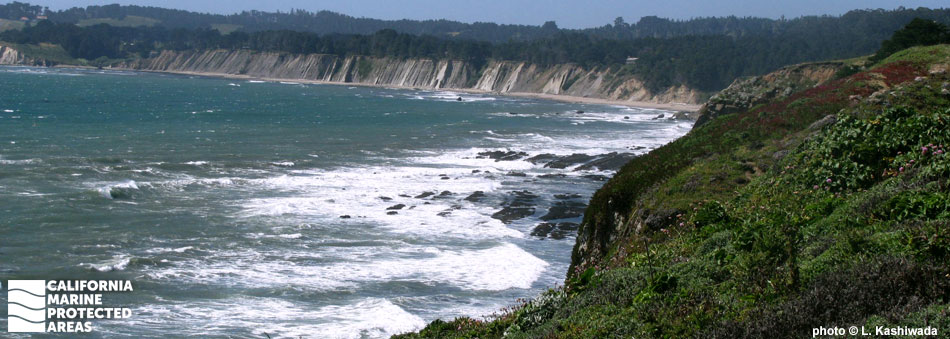
Overview
Saunders Reef State Marine Conservation Area (SMCA) sits off the rugged Mendocino Coast, four miles south of Point Arena and over 100 miles northwest of San Francisco. The marine protected area (MPA) covers a little more than nine square miles of ocean and reaches depths of around 275 feet. The MPA contains stretches of sandy beach, rocky headlands, shallow intertidal tidepools, kelp forests, rocky reefs, and deep, sandy seafloor. The varied environments offer ample recreational activities for visitors. The area is frequented by whale and bird watchers, tidepoolers, salmon trollers, and scuba and free divers. Easy access to coastal trails and the shoreline makes Saunders Reef SMCA an ideal stop for visitors looking to experience the northern California coast.
Regulations
It is unlawful to injure, damage, take, or possess any living, geological, or cultural marine resource, EXCEPT:
Recreational and commercial take of salmon by trolling is allowed. Commercial take of urchin is allowed.
California Code of Regulations Title 14, Section 632(b)(31)(opens in new tab)
Quick Facts
MPA size: 9.36 square miles
Shoreline span: 2.5 miles
Depth range: 0 to 276 feet
Habitat composition*:
- Rock: 5.62 square miles
- Sand/mud: 6.57 square miles
*Habitat calculations are based on three-dimensional area and may exceed the total MPA area listed above.